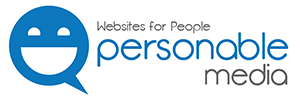
One of the crowning accomplishments of the late great Stephen Covey, author of the classic 7 Habits of Highly Effective People, is his idea about the difference between effectiveness and efficiency. It can teach us a lot about the challenges of connecting with people through technology.
With this mind, let’s talk about his greatest insights and relate them to technology. Efficiency is the heart and soul of technology. It is designed to be efficient. But efficiency does NOT have to be its purpose. As Covey makes abundantly clear, efficiency will only take you so far; it works well with objects, but NOT with people. In other words, how can technology become a more effective tool?
1. Fast with things. Slow with people
At work, we are taught to be efficient. The faster an employee is, the more valuable he or she is to the company. The same is true for coffee makers, computers, copy machines, cell phones, and a thousand other examples. In fact, value is measured by the speed of technology’s operation. Faster is always better.
With so much emphasis on speed, can you blame us for forgetting that everything natural grows slowly? How does an acorn become a hundred-foot oak tree? Very slowly. How does an infant become a toddler? I have never seen parents encourage an infant to hurry, hurry, hurry, grow up!
Here’s how Stephen Covey put it, “Empathy takes time, and efficiency is for things, not people.”
When the focus is on the medium through which you communicate with people and not the people with whom you are communicating, you are headed for a heartbreak. When communicating through technology keep Covey’s admonition in mind: fast with things, slow with people.
2. Is your ladder against the right wall?
 Did you hear about the doctor who consulted with a patient and said, I think we’re going to have to operate on you this afternoon, I have a Porsche payment this week? This is what he meant by putting your ladder on the wrong building.
Did you hear about the doctor who consulted with a patient and said, I think we’re going to have to operate on you this afternoon, I have a Porsche payment this week? This is what he meant by putting your ladder on the wrong building.
To be clear, a ladder on the right wall means having your efforts serve your highest purpose, not putting the cart before the horse or neglecting what is most important in the shortsighted pursuit of what is not.
Are humans born to use their intelligence and time to understand technology? Or is technology built to use its intelligence to serve humans, to anticipate our needs and accommodate us? Don’t forget that without customers, technology itself becomes obsolete, just a blender plugged into an abandoned outlet. Technology can always be replaced, people can’t.
Here’s how Stephen Covey explained this, “If the ladder is not leaning against the right wall, every step we take just gets us to the wrong place faster.”
3. Begin with the end in mind
If you were designing an office building, and left no space for a parking lot, this is an example of not beginning with the end in mind. You overlooked that the function of any building is to serve people. The same is true for technology. Don’t forget what the goal is, what the end is.
You wouldn’t tolerate a pilot who neglected to have a flight plan before the plane takes off. Or, imagine a dentist who said he’s too busy to take X-rays. He says, I’ll just make an educated guess and pull the first two teeth that come to mind. Isn’t that exactly what people do when their focus is on technology and not on their customers?
Covey said, “We may be very busy, we may be very ‘efficient’, but we will also be truly ‘effective’ only when we begin with the end in mind.”









[…] my last blog, I very briefly touched on how having a website designed with the end in mind makes it easier to update. I asked you to consider how your web designer sets up your website on […]